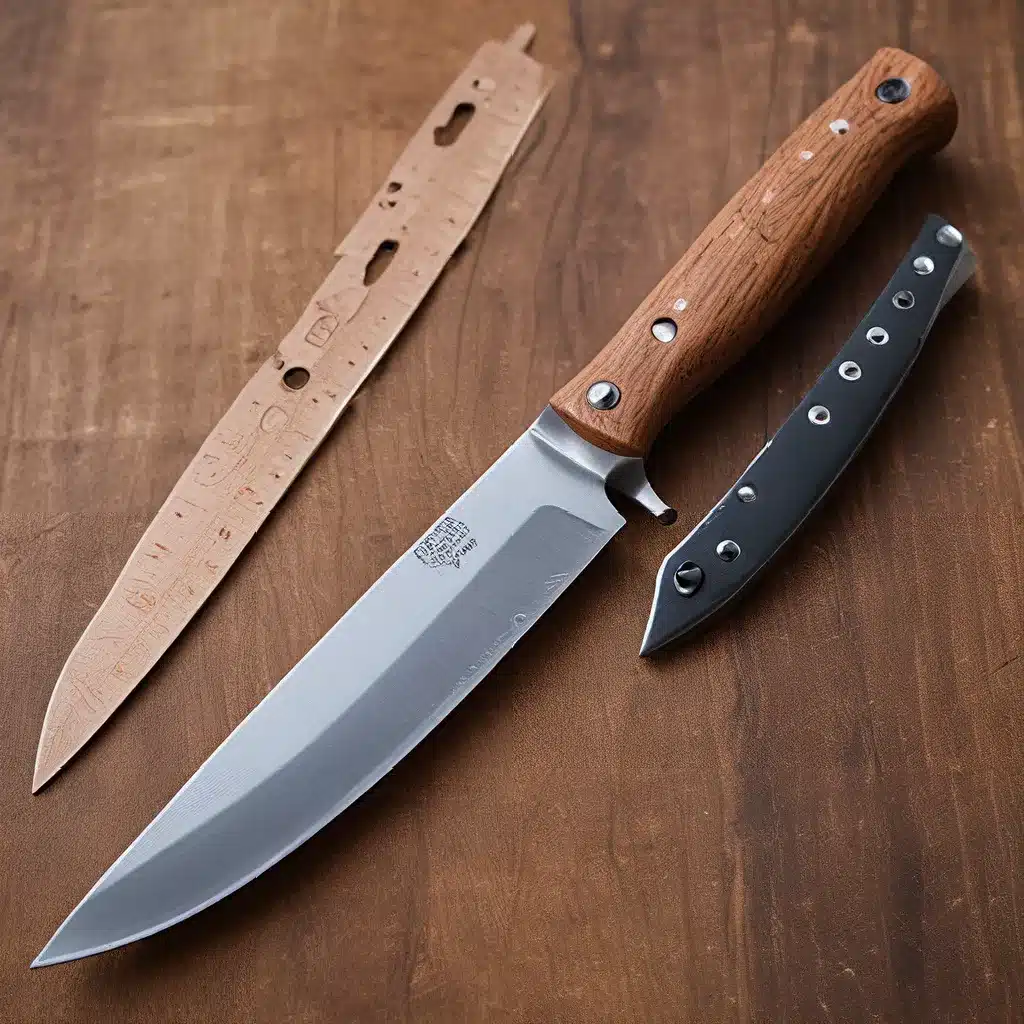
As a passionate outdoor enthusiast, I know the importance of having a trusty pocket knife by my side. Whether I’m tackling rugged terrain in the Australian Outback or simply taking on everyday tasks, my knife has become an indispensable tool. But like any piece of gear, it requires some TLC to ensure it remains in peak condition. That’s why I’m here to share my proven knife maintenance routines – the secrets to keeping your blades sharp, rust-free, and ready for any challenge.
Cleaning and Oiling: The Dynamic Duo
Let’s start with the basics: cleaning and oiling your knife. In the harsh conditions of the Outback, where dust, dirt, and moisture are constant companions, maintaining a clean and well-lubricated blade is crucial. After each use, I make it a point to give my knife a thorough wipe-down with a damp cloth and a bit of mild soap. Pay special attention to the pivot area and the handle, as these are the prime spots for grime buildup.
Once I’ve removed all the accumulated debris, I carefully dry the blade to prevent any lingering moisture from turning into rust. This is where a light coat of high-quality knife oil comes into play. I apply the oil sparingly, ensuring it provides a protective barrier against the elements without creating an unsightly mess. By maintaining this simple cleaning and oiling routine, I can rest assured that my knife will continue to operate smoothly and resist corrosion, even in the most challenging environments.
Sharpening: The Art of the Edge
A dull blade is not only frustrating to use, but it can also become a safety hazard. That’s why regular sharpening is an essential part of my knife maintenance regimen. I’ve invested in a quality sharpening stone or honing rod, which allows me to keep my blade razor-sharp and ready for action.
The key to effective sharpening is to start by assessing the condition of your knife’s edge. Determine the appropriate sharpening angle based on the knife’s design and intended use. Then, using gentle, consistent strokes, I carefully glide the blade across the sharpening surface, alternating sides to achieve a uniform edge. It’s important to avoid applying excessive pressure, as this can lead to uneven sharpening and potential damage to the blade.
Patience and precision are the watchwords here, my friends. By taking the time to properly sharpen my knife, I not only improve its cutting performance but also ensure its longevity. A well-maintained, sharp blade is not only a joy to use, but it’s also a safer one.
Proper Storage: Protecting Your Investment
After all the hard work of cleaning, oiling, and sharpening, the final step in my knife maintenance routine is proper storage. I invest in a durable sheath or pocketknife case to provide added protection for my blade during transport and storage. Avoiding humid or damp environments is crucial, as moisture can promote the dreaded rust and corrosion.
I opt for well-ventilated storage solutions that allow for air circulation and minimize moisture buildup. This not only preserves the condition of my knife but also ensures that it’s always ready for my next outdoor adventure. Trust me, the peace of mind that comes with knowing your trusty blade is safely tucked away is worth the small investment.
Maintenance Kits: Your Pocket-Sized Companion
As an avid outdoorsman, I’ve learned that being prepared is half the battle. That’s why I always keep a compact maintenance kit on hand, ready to tackle any issues that may arise with my knife. This kit typically includes cleaning supplies, a high-quality oil, and a sharpening tool – everything I need to keep my blade in top shape, no matter where my adventures take me.
Having this kit at the ready allows me to address any problems promptly, ensuring my knife remains reliable and ready for action. It’s a small investment that pays huge dividends, especially when I’m venturing into the rugged, unpredictable terrain of the Outback.
Customized Routines for Your Blade
Let’s face it, not all knives are created equal. The materials, construction, and intended use of your blade can all play a role in determining the best maintenance strategies. That’s why it’s crucial to understand your knife’s unique characteristics and tailor your routines accordingly.
For instance, a carbon steel blade may require more frequent oiling to prevent corrosion, while a stainless steel knife might be more forgiving in terms of water exposure. Similarly, the sharpening angle and technique may vary depending on the blade’s design and intended purpose. By taking the time to learn about your knife’s specific needs, you can ensure that your maintenance efforts are both effective and efficient.
Embracing the Journey: Endless Possibilities
As I venture forth into the great unknown, my trusty knife by my side, I can’t help but feel a sense of excitement and curiosity. The world of knife care and outdoor survival is vast and ever-evolving, with new techniques and technologies constantly emerging. I find myself constantly exploring, learning, and experimenting, always eager to uncover the next secret to keeping my blades in top condition.
Herman Knives has been an invaluable resource in my journey, providing not only high-quality blades but also a wealth of knowledge and support. I encourage all of you, my fellow knife enthusiasts, to embark on your own exploration, to embrace the challenges and joys of maintaining your tools, and to let your curiosity guide you to new depths of blade care and outdoor adventure. Together, let’s keep our knives sharp, our spirits high, and our adventures endless.


